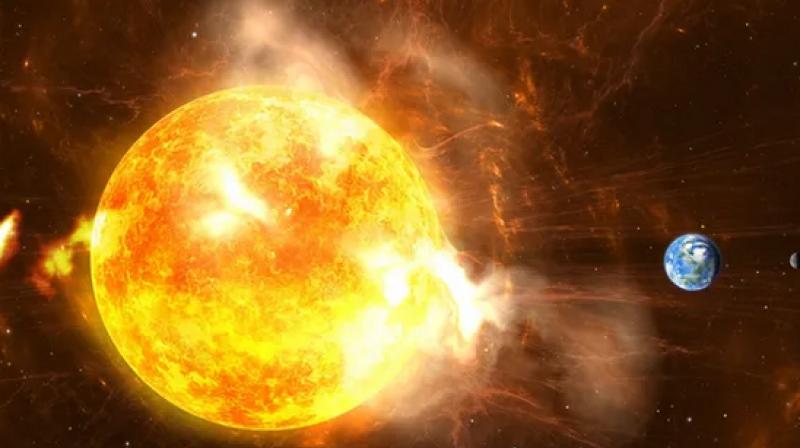Phones, GPS signals might be affected by solar storm heading towards the Earth today

An excessively fierce solar storm heading towards the Earth on Monday, July 12 might affect power around the world. The solar storm heading with a speed of 1.6 million kilometres could hit the Earth on Monday, possibly interrupting the world’s satellite signals.
According to SpaceWeather.com, a hole has opened up on the atmosphere of the Sun. Originating in the Sun’s atmosphere, this hole is spewing a stream of fiercely charged particles and high-speed solar winds directly towards the Earth.
The winds have a chance of triggering a geomagnetic storm in the Earth’s magnetosphere, including the upper parts of the Earth in space. This could possible lead to visual auroras in regions in the north and south latitudes.
According to the National Aeronautics and Space Administration (NASA), solar winds blow at one million kilometres per hour. The current storm is heading towards earth at a speed of 1.6 million kilometres per hour, with a high possibility of its speed increasing. The storm was estimated to hit the earth’s magnetosphere on July 11-12.
The storm can heat up the Earth’s outer atmosphere, resulting to a direct affect on satellites. This can cause interference to mobile signals, GPS navigation, satellite TV, as well as a higher voltage current in power lines. However, with the Earth’s magnetic field creating a protective layer over the earth, this possibility has a high chance to be curbed.
According to the Space Weather Prediction Centre of the United States, the solar flare’s impact will be focused on the sub-solar point on the sunlit side of Earth. NASA classifies this flare as an X1.5-class flare. The storm has an ability to impact the Earth’s magnetic field-dominated part of space.
“Flowing from an equatorial hole in the sun's atmosphere, wind speeds could top 500 km/s. Full-fledged geomagnetic storms are unlikely, but lesser geomagnetic unrest could spark high latitude auroras,” the SpaceWeather website reported.

